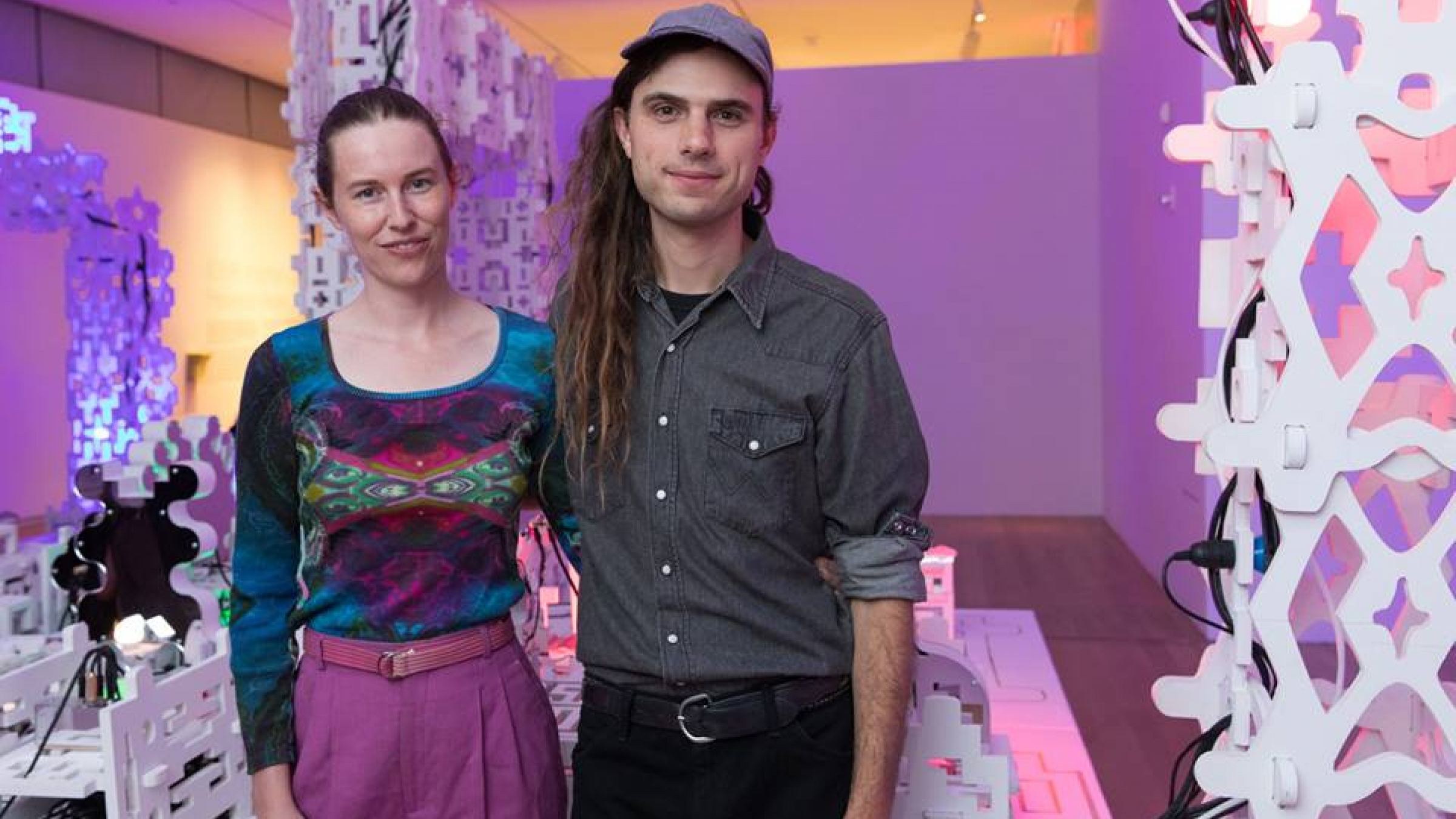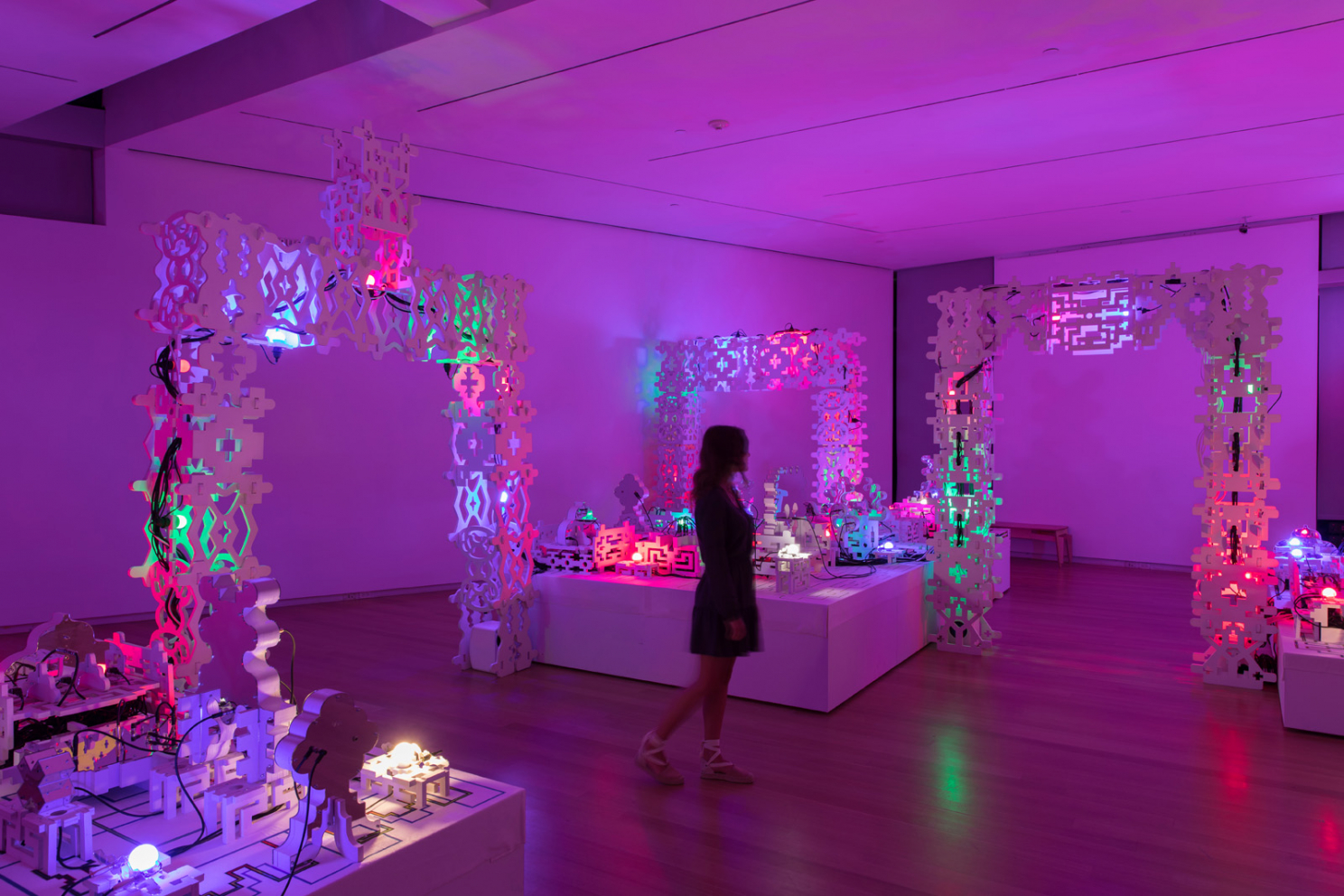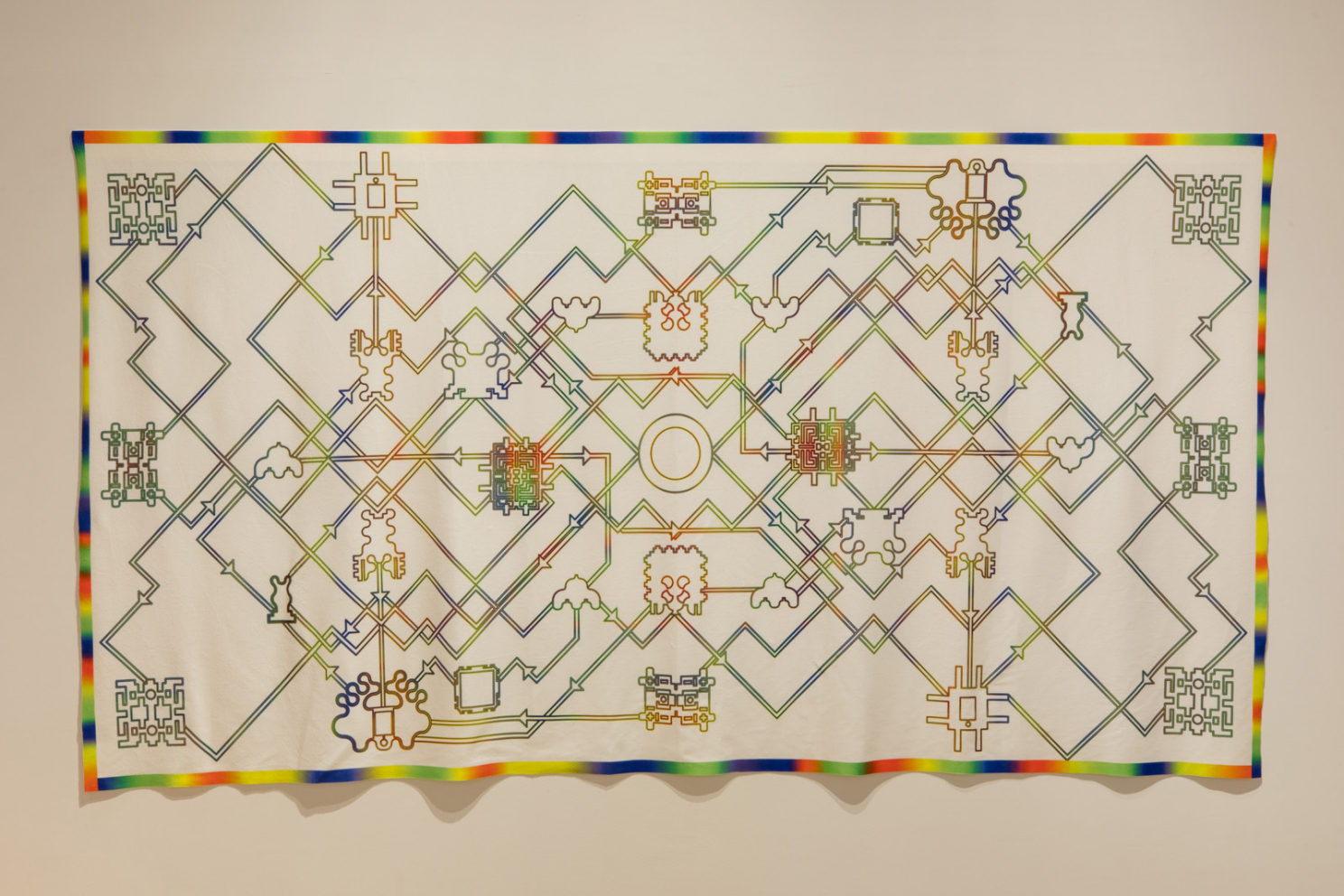Sonic Arcade: Interview with MSHR

Knotted Gate Presence Weave, 2017 by MSHR, the art collective of Birch Cooper and Brenna Murphy, is part of MAD’s new exhibition Sonic Arcade: Shaping Space with Sound, on view through February 25. Learn more about their approach to art and sound…
MSHR’s work meshes digital sculpture, analogue circuitry, and ceremonial performance. The duo builds and explores cybernetic systems using synthesizers of their own design. For exhibitions, they install macro-arrangements of these sculptural instruments to create immersive light-sound-scapes. In their performances, they engage the systems through a series of unique interfaces. They also work with 3D modeling programs to design virtual forms that are output as images and sculptures with the use of digital fabrication. MSHR’s sculptural, musical, and electronic works inform each other deeply, creating the meta-form that is the duo’s collaborative practice. MSHR emerged from the five-person art collective Oregon Painting Society in Portland, Oregon, in 2011. They have been artists-in-residence at Sonoscopia, Eyebeam, Pioneer Works, and Signal Culture.

1. Tell us a bit about your background(s) coming to and working with sound as a medium.
We first began collaborating together as part of the art collective Oregon Painting Society. That group was radically collaborative, and we all synthesized our methods and materials to produce immersive installations.
Birch’s background was in sound sculpture using analogue electronics, so that became a part of our palette. He studied music composition and sculpture at the Evergreen State College, where he got into John Cage and avant-garde/experimental music. This led to an interest in installation as a physical score for a musical composition—essentially turning the gallery into a composition that could be played by visitors via their movement and interaction with objects. Analogue electronics were a useful tool for achieving interactive sound in these environments because you can easily build them yourself to look like anything you want, so they become a kind of prosthesis for expanded interaction that creates a kind of augmented reality.
For Brenna, sound is a visceral medium that feeds into the visual. Playing music requires being present and having flow with the materials you are working with. It is about activating experience. Our work in sound can change a viewer’s state of mind or relationship to their surroundings, elevating their sensory experience and relationship to other people and space.

We emphasize playing with or designing for non-musicians. Our environments use generative systems as a means to produce non-narrative musical forms, using human presence to act upon and collaborate with these analogue systems to effect and set off what are, for the most part, unrepeatable results. Introducing humans into the analogue electronic feedback system integrates them into and makes them an inherent part of the generative system, producing sound that is both poetic and magical.
2. In what ways do you consider sound “material” and explore that through your practice?
We think of sound as the flow of electricity, like the flow of a river or wind. When we create an installation or play improvised music, it is like moving around rocks in a river to change the flow of water.
3. Can you talk about how collaboration is important to your work, whether in regard to whom you make work with or how the audience might act as collaborator in their reception of it?

Both of us have always sought out the collaborative, whether playing live music or belonging to the art collective Oregon Painting Society. That experience, which was made up of five to seven people at any time, taught us how to work successfully in a group where zero hierarchy helped a large collective thrive. We fed off that group energy and brought that to bear on our work as MSHR.
Our interest in using unpredictable systems also comes from the collaborative impulse. Similar to working with other people, you end up making something you didn’t expect or that is not what you planned it to be. A collaborative or collective is an emergent system not unlike working with analogue electronics. MSHR is an organization that we can pour our life force into and take life force from. We can engage in fundamental aspects of human experience through intuitively creating forms and then dancing with these systems that we make.
4. Sound practices seem to have increased in prevalence. Do you see a reason for sound’s wider practice and reception that is particular to our times?
It seems to us that a conceptual gap between visual art and sound closed a long time ago but culture is still slowly catching up. We don’t think there should be a distinction between art forms based on material, but we are happy that sound is becoming more understood in the context of art. We would credit a widened accessibility to electronic instruments for bringing more artists to working with electronic sound. A few decades ago, synthesizers were rare and costly, but now anyone with a computer can use free open-source programs to experiment with synthesis or learn how to build their own analogue system. It’s an exciting time for sound in art!
Subscribe
Join our mailing list.
Join
Become a member and enjoy free admission.
Visit
Find out what's on view.